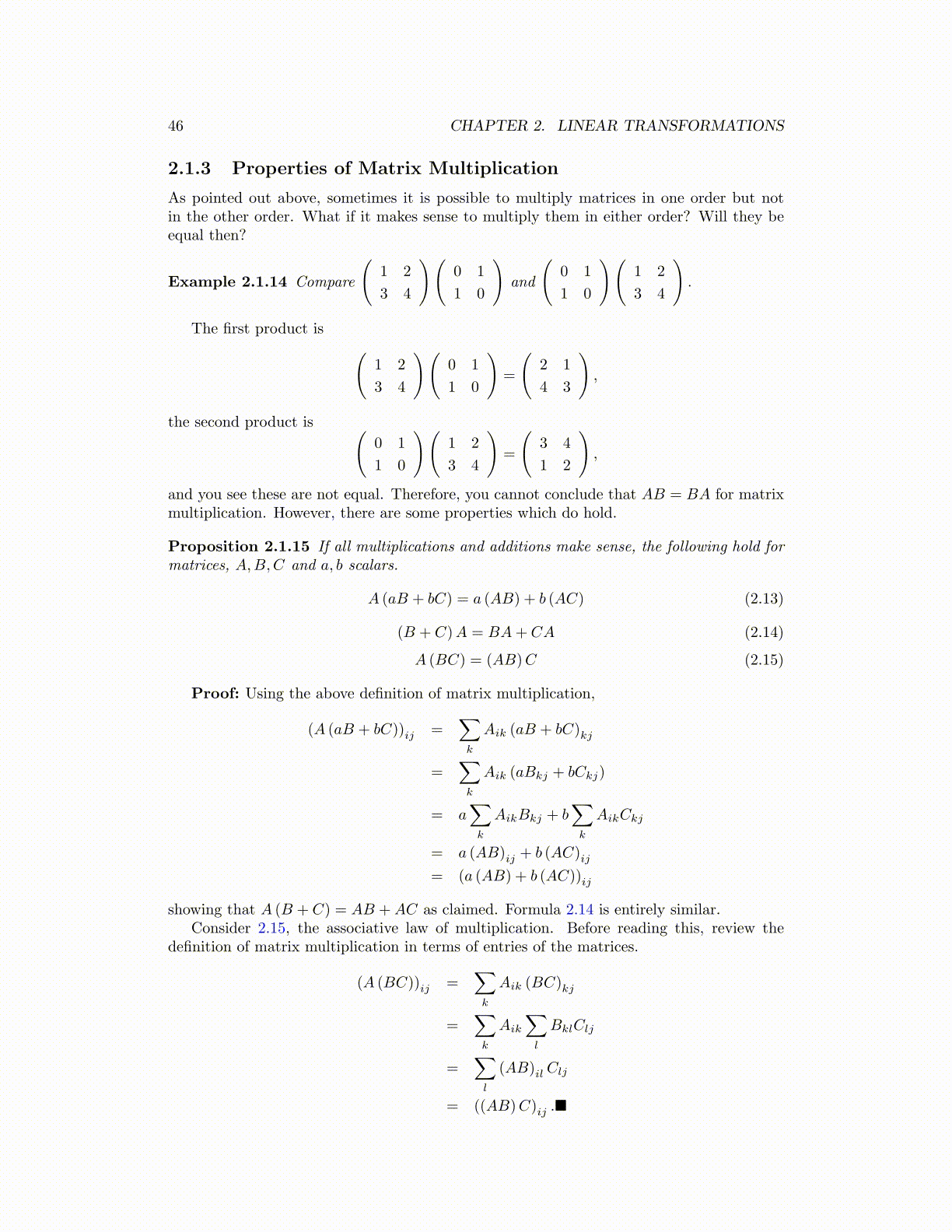
46 CHAPTER 2. LINEAR TRANSFORMATIONS
2.1.3 Properties of Matrix Multiplication
As pointed out above, sometimes it is possible to multiply matrices in one order but notin the other order. What if it makes sense to multiply them in either order? Will they beequal then?
Example 2.1.14 Compare
(1 2
3 4
)(0 1
1 0
)and
(0 1
1 0
)(1 2
3 4
).
The first product is (1 2
3 4
)(0 1
1 0
)=
(2 1
4 3
),
the second product is (0 1
1 0
)(1 2
3 4
)=
(3 4
1 2
),
and you see these are not equal. Therefore, you cannot conclude that AB = BA for matrixmultiplication. However, there are some properties which do hold.
Proposition 2.1.15 If all multiplications and additions make sense, the following hold formatrices, A,B,C and a, b scalars.
A (aB + bC) = a (AB) + b (AC) (2.13)
(B + C)A = BA+ CA (2.14)
A (BC) = (AB)C (2.15)
Proof: Using the above definition of matrix multiplication,
(A (aB + bC))ij =∑k
Aik (aB + bC)kj
=∑k
Aik (aBkj + bCkj)
= a∑k
AikBkj + b∑k
AikCkj
= a (AB)ij + b (AC)ij= (a (AB) + b (AC))ij
showing that A (B + C) = AB +AC as claimed. Formula 2.14 is entirely similar.Consider 2.15, the associative law of multiplication. Before reading this, review the
definition of matrix multiplication in terms of entries of the matrices.
(A (BC))ij =∑k
Aik (BC)kj
=∑k
Aik
∑l
BklClj
=∑l
(AB)il Clj
= ((AB)C)ij .■